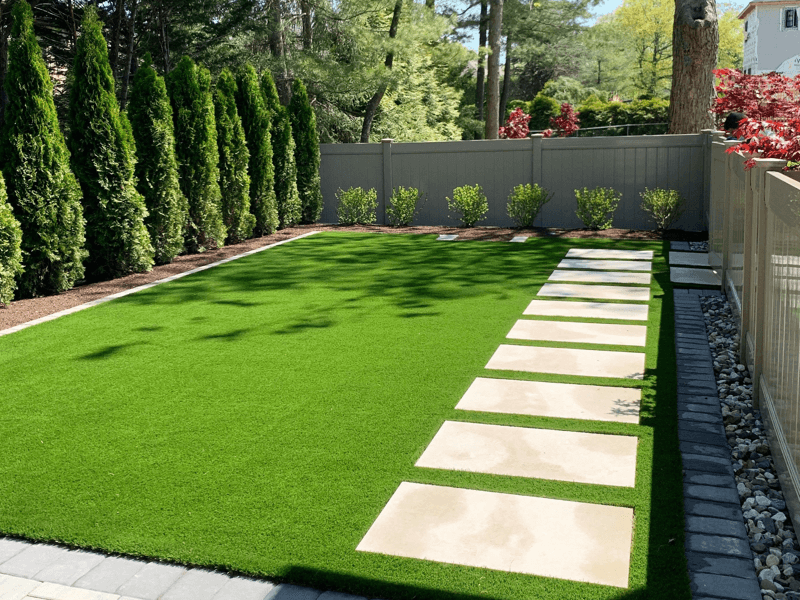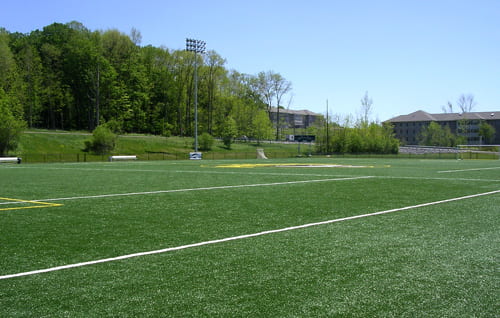High-Quality Arizona Turf Installation Services for Homes and Commercial Properties
High-Quality Arizona Turf Installation Services for Homes and Commercial Properties
Blog Article
Delve Into the Environmental Benefits of Opting for Artificial Turf Solutions
The fostering of artificial turf options offers a compelling chance to resolve pressing ecological obstacles. By substantially decreasing water use and decreasing the application of damaging chemicals, these choices not just promote lasting landscaping however additionally shield neighborhood environments.
Water Preservation Benefits
One of the most considerable advantages of synthetic turf is its capacity to save water. In comparison, fabricated lawn does not need watering, significantly decreasing the overall demand for water sources.
By removing the need for regular watering, synthetic grass contributes to sustainable landscape techniques and assists minimize the environmental impact of extreme water consumption. The conservation of water prolongs to the reduction of drainage, which can lead to dirt disintegration and river air pollution.
Additionally, the installment of artificial turf allows property owners and districts to allocate water resources more efficiently, concentrating on crucial usages such as alcohol consumption water and farming. The change in the direction of fabricated lawn not only promotes responsible water use yet additionally straightens with more comprehensive ecological goals focused on protecting natural deposits.
As areas increasingly focus on sustainability, the water preservation benefits of synthetic grass present an engaging instance for its fostering in commercial and household landscape design jobs.
Decreased Chemical Usage
The change to man-made grass considerably decreases the reliance on chemical therapies frequently used in all-natural turf upkeep. Conventional turf administration commonly includes the application of herbicides, pesticides, and fertilizers to advertise development and control bugs. These chemicals can pose threats to human health and wellness, local wild animals, and the setting, adding to soil and water contamination.
On the other hand, artificial grass gets rid of the demand for these damaging materials. Once mounted, it needs marginal upkeep, mostly containing routine cleansing and infrequent infill replenishment. This reduction in chemical use not only profits the prompt atmosphere yet also contributes to wider environmental security. By decreasing the launch of synthetic compounds into the ecological community, synthetic grass promotes healthier soil and water systems.
In addition, the absence of chemical runoff associated with synthetic grass setups assists secure regional waterways from air pollution, sustaining water life and preserving biodiversity. Phoenix turf companies. As neighborhoods progressively prioritize sustainable practices, going with synthetic turf presents a sensible solution that straightens with ecological conservation goals. Through this change, homeowner can enjoy lush environment-friendly areas without jeopardizing ecological health, leading the method for a much more sustainable future
Reduced Carbon Footprint

Moreover, the installation of synthetic grass can result in substantial water conservation. Natural lawns require significant amounts of water for watering, which not just includes to the carbon footprint connected with water extraction and treatment however additionally pressures neighborhood water sources. On the other hand, synthetic grass requires minimal maintenance, requiring no watering, consequently dramatically minimizing water use and its linked power prices.
Additionally, the durability of man-made lawn adds to its reduced carbon impact. With a lifespan of up to 15 years or more, the demand for constant substitutes is lessened, causing much less waste and reduced power intake in production and getting rid of typical grass choices. On the whole, man-made grass provides a sustainable option for eco aware landscape design.
Environment Preservation
Habitat preservation is a crucial consideration in the debate over landscape design home selections, specifically when contrasting synthetic turf to all-natural lawn. Natural grass yards often require considerable maintenance, including using pesticides, fertilizers, and herbicides, which can negatively impact neighborhood ecosystems. These chemicals can seep right into the dirt and waterways, hurting native vegetation and animals and disrupting neighborhood habitats.
Artificial turf eliminates the need for unsafe chemicals, thereby securing close-by wildlife and keeping the integrity of bordering environments. The installment of fabricated lawn can lead to the conversion of previous yard areas into more biodiverse landscapes, such as pollinator yards or indigenous plant locations, which can sustain neighborhood wildlife.
Eventually, the shift to synthetic grass not just saves water and decreases upkeep efforts however also fosters an extra unified connection between human activities and the native environment, advertising environment preservation while doing so.
Long-Term Sustainability
Long-lasting sustainability is a critical consider assessing the advantages of synthetic grass over standard turf yards. Among one of the most considerable advantages of synthetic turf is its sturdiness; it can last approximately 15-20 years with minimal maintenance, whereas all-natural lawn requires regular reseeding and substitute. This longevity lowers the requirement for consistent sources, such as water, fertilizers, and chemicals, which are vital for keeping a healthy grass yard.
Additionally, man-made turf adds to a reduction in carbon exhausts related to grass care equipment. Standard grass typically call for gas-powered mowers, leaners, and blowers, all of which contribute to air contamination. Turf installation phoenix az. In comparison, synthetic grass removes the demand for such devices, advertising a cleaner environment
Furthermore, the production of synthetic grass significantly makes use of recycled materials, visit this page enhancing its sustainability account. As manufacturers adopt eco-friendly practices, the ecological impact of synthetic grass continues to decrease.

Final Thought
The adoption of man-made lawn solutions presents significant environmental advantages, consisting of substantial water preservation, reduced reliance on damaging chemicals, and a lower carbon footprint. Man-made grass aids in maintaining natural habitats by decreasing land disruption and promoting lasting sustainability with the use of durable products. Jointly, these variables emphasize the capacity of synthetic grass to add positively to environmental wellness and use a practical alternative to conventional landscaping techniques in a progressively resource-conscious world.
In comparison, artificial lawn does not require watering, considerably decreasing the total demand for water sources. By lessening the release of artificial compounds right into the environment, artificial grass advertises much healthier dirt and water systems.
Additionally, the installment of fabricated grass can result in substantial water conservation. In comparison, artificial lawn needs marginal maintenance, needing no watering, thereby dramatically decreasing water use and its associated energy expenses.

Report this page